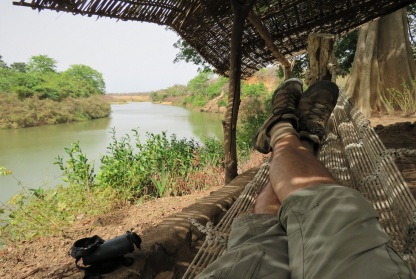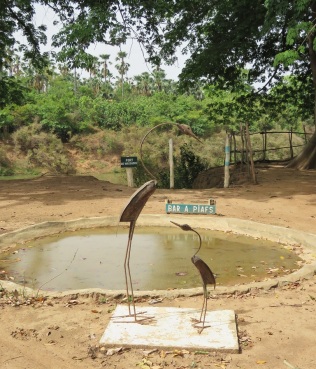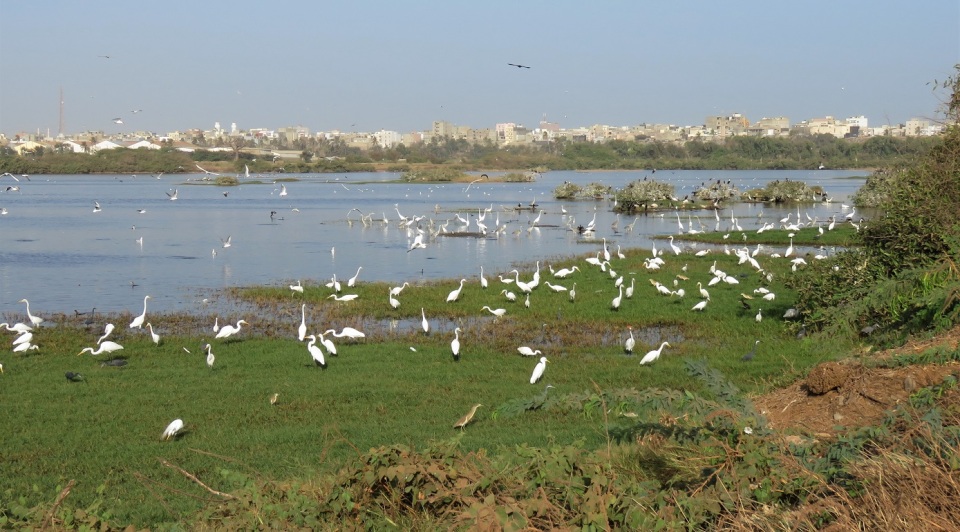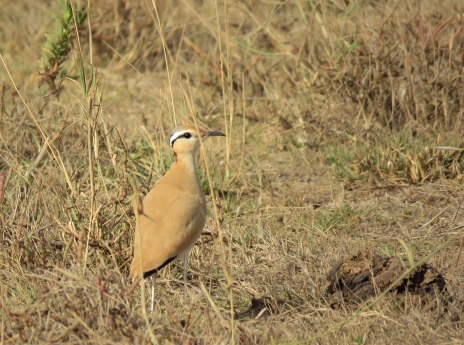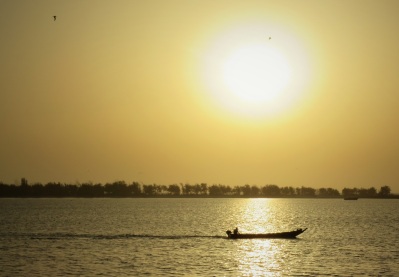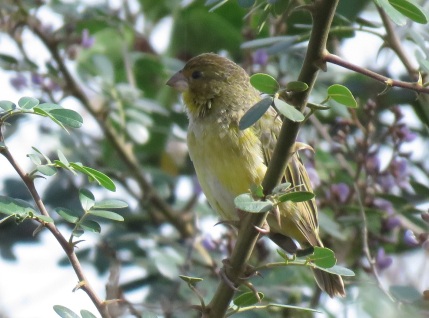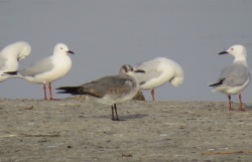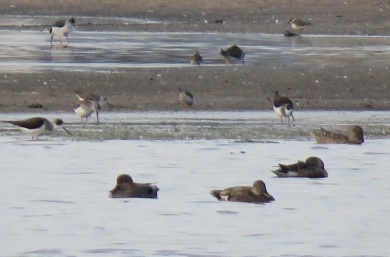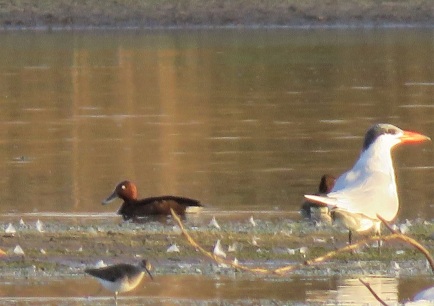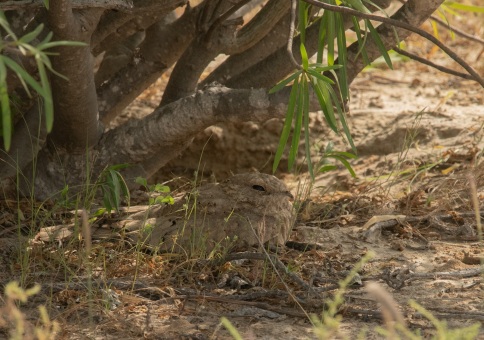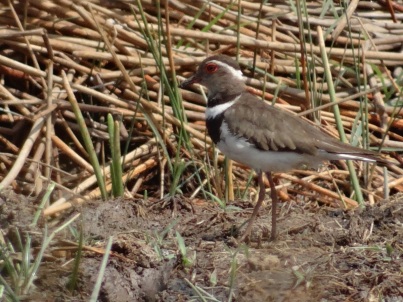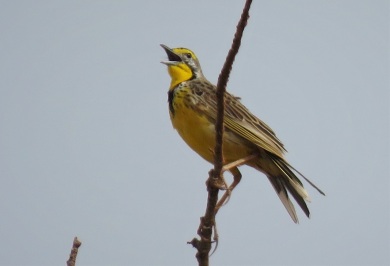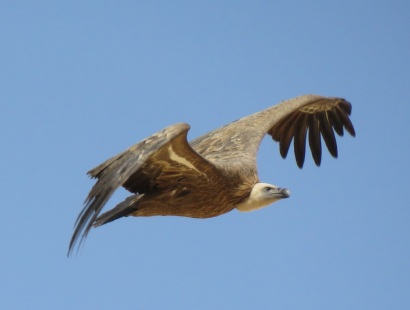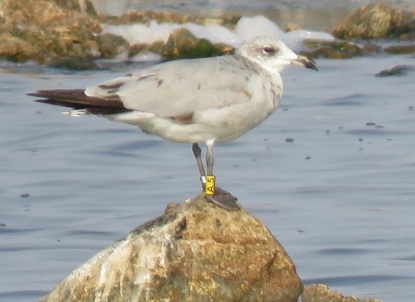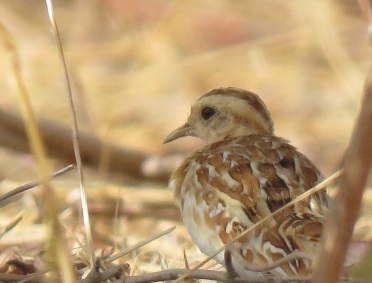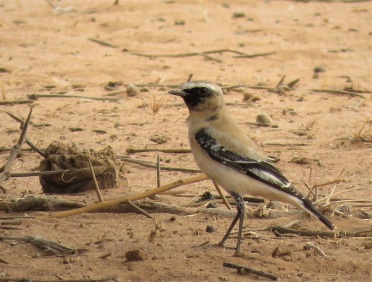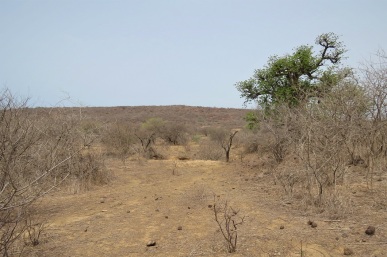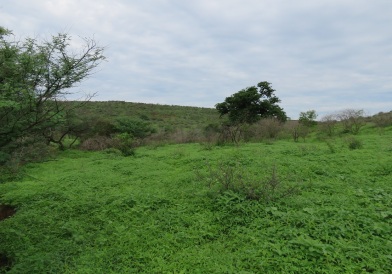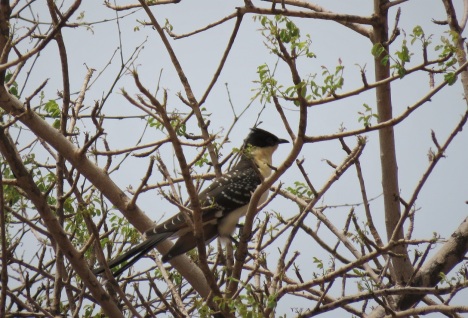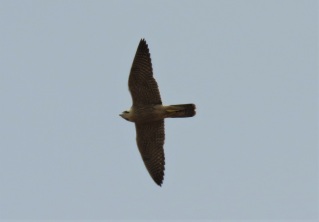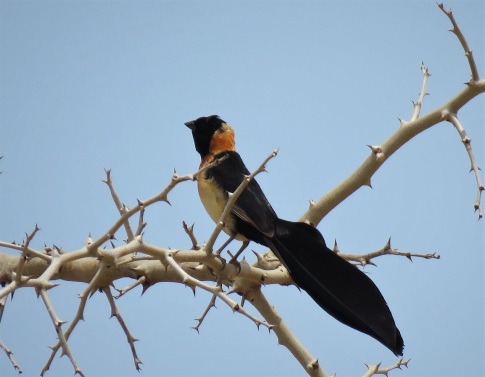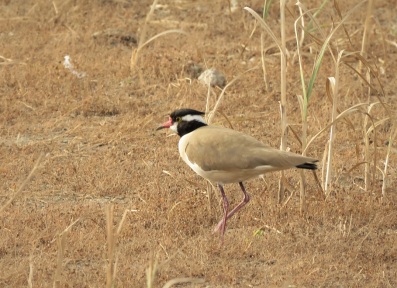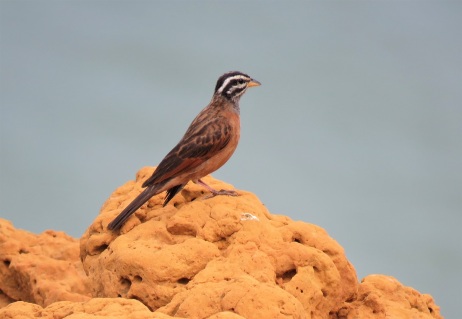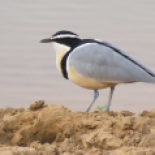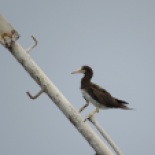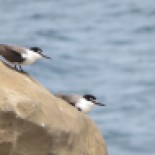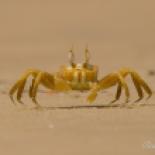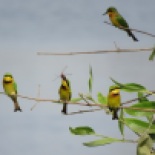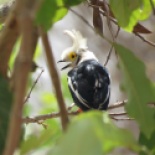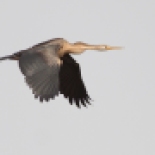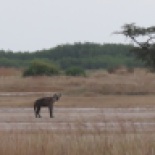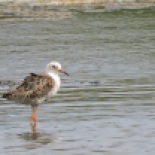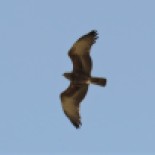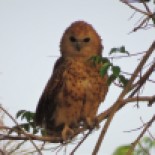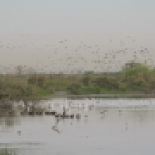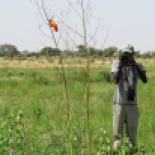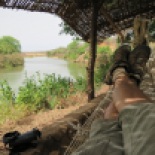Au revoir la Teranga
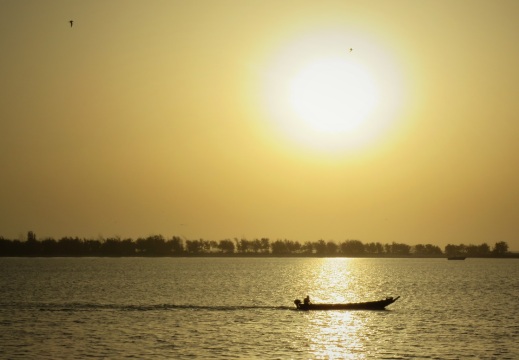
Our regular readers will have noticed that it’s been very quiet on this blog in recent months, so it’s about time I published an update here. There’s a simple reason for the lack of recent posts: after just over five years in Dakar, it was time to move on. Three weeks ago we landed in Laos where we will be based for the foreseeable future, marking the start of a new adventure here in Vientiane. And the end of a pretty amazing experience living in Senegal.
Moving on is of course bittersweet, as I will certainly miss the fabulous bird life that Senegal has to offer, yet at the same time I’m excited to discover the birds and culture of Laos. Even if we’re currently living in rather unsettling and unpredictable times, to say the least. Many of you will be reading this while confined at home, but being extremely busy with my work here I’ll need to keep it short… somehow writing this post is actually the one that I’ve struggled the most with so far – it’s been sitting in my drafts for about three weeks now.
Over the past five years I managed to visit all but one of the country’s regions – sadly I never made it to Matam! – and was lucky to see a good deal of its birds, 530 species to be precise, 527 of which I saw during 2015-2020. A few other numbers: some 52,500 records “collected”, four additions to the country list, about 1,040 sound recordings posted on xeno-canto, tons of poor quality bird photographs, countless happy hours in the field…
There are of course a few specials that I didn’t get to track down, such as Golden and Egyptian Nightjar, White-throated Francolin or Denham’s Bustard to name but a few, and I somehow managed to never visit Kousmar (pretty unbelievable right?) and the Niokolo-Kobo proper (I was happy enough exploring Wassadou on three occasions), but these are all good reasons to one day come back of course. That said, I’m not very optimistic about the state and future of Senegal’s environment, and while this is not the time to expand on this, there have been many frustrating, sad and upsetting moments when confronted on an almost daily basis with the ongoing destruction of natural habitats, with the ever-increasing pollution levels, and with the population’s general indifference and ignorance when it comes to nature and wildlife conservation.
Senegal certainly has treated us well and I feel privileged to have had the chance to explore the country these past few years. I tried to promote birding in Senegal and think I made some modest contributions to the “body of ornithological knowledge” both through this blog (149 posts!) and through a number of papers, 14 to be precise, something we’ll try to continue doing in coming months (years?). The absence of recent posts on SenegalWildlife is definitely not for a lack of ideas or material… just need to find the time to write up stuff, be it here in these pages or elsewhere.
Lots of good memories, of encounters with birds of course but also of places and people, too many to start listing here. Unexpected finds, and some unexpected birding settings.
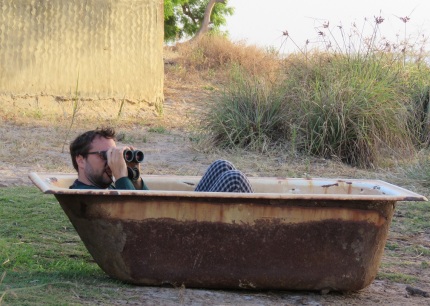
Birding the Saloum delta (yes that’s me in my pyjamas in a bath tub on the edge of a mud flat, one of those randomly surreal settings one may find oneself in… only in Senegal!) – Picture by Jane Piot
Despite the crazy busy few weeks leading up to our departure from Dakar, I was of course keen to go back out to some of my favourite spots: Popenguine, Technopole, Mbeubeusse, Lac Rose, and of course Le Calao for my daily dose of seawatching.
And as always there were some good birds to be seen here, some of which were quite unexpected. During my last visit at Technopole on the morning of our departure (8.3), a pair of Eurasian Teals was a nice find. My final ring reading here was of a French Eurasian Spoonbill ringed in the Camargue colony in 2016… with now +600 ring readings in my little database, there’s definitely enough material to write up another post on this topic. An immature Brown Booby on 21.2 and 5.3 at Ngor was pretty classic at this time of the year. Much less expected was a fine Cream-coloured Courser on the steppe near lac Rose on 20.2, apparently the first record for the Dakar region. It was loosely associating with a few Temminck’s Coursers, a classic species here, just like the handful of Greater Short-toed Larks that were present the same day. A few days earlier, a Temminck’s Stint at Mbeubeusse (16.2) was yet another scarce migrant to show up at this prime location for waders. And during our last visit to Popenguine (23.2) a Chestnut-crowned Sparrow-Weaver was a good record from this location, of a species that is rarely reported away from the south-east and that in fact I’d only seen once before in Senegal, near Kedougou.
Thanks to our followers and regular readers.
Take care, stay safe, flatten that curve.
Au revoir le pays de la Teranga, à la prochaine!
Year in review: 2019
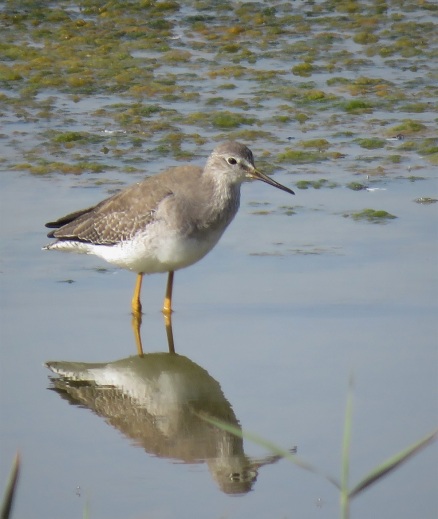
As is now a bit of a tradition on these pages, I’m again compiling a review of last year’s main birding events. Senegal’s bird year 2019 was a pretty good one, with the usual decent mix of new discoveries, rare vagrants, scarce migrants, range extensions and new breeding records.
First things first: last year saw the addition of two new species to the country’s avifauna, so rather similar to previous years – on average, there have been two additions per year during 2014-2018. First a Willcock’s Honeyguide in Dindefelo nature reserve found by Nik Borrow and his group in January, then the discovery of a small group of Cuckoo Finches at Kagnout in Casamance, in February by Bruno Bargain, Gabriel Caucal and Adrien de Montaudouin. As predicted back in 2018, both Dindefelo and Casamance are obviously key areas for finding new birds in the country. Both species are known to occur in neighbouring countries so these additions are not too much of a surprise, and will likely show up again in Senegal in coming years. These “firsts” bring the total number of species confirmed to occur in Senegal to 674, with seven additional species listed as requiring confirmation. The full checklist as per IOC taxonomy (v.8.1) may be found here.
Next up, the usual lot of vagrants: from North America, the now annual American Golden Plovers (Palmarin in April, and Yene in December), the country’s fourth Pectoral Sandpiper at Lac Mbeubeusse on 5.10, and a Lesser Yellowlegs wintering at Technopole – apparently the longest stay recorded in Africa (at least 71 days!), and most likely the same bird seen several years in a row now. Two Laughing Gulls that were present at Technopole in April-May – an adult in breeding plumage and a first-summer bird – were the 6th and 7th records; the immature was also seen at Ngor on 22.5. Also at Technopole were at least two different Franklin’s Gulls, one in January and two in April-May including an adult displaying to other gulls. A Lesser Jacana was found by Vieux Ngom on 16.3 on the Lampsar, while a Spotted Creeper on 17.12 at Kamobeul (Ziguinchor) was another rarely recorded Afro-tropical vagrant. And finally from Europe, a Little Gull – possibly not a true vagrant but rather a very scarce winter visitor – was seen on 8.3 at Ngor, and a European Golden Plover was at Saloulou island (Casamance) on 25.2.
Scarce migrants included a few species of ducks that are rarely reported from Senegal, starting with these three Gadwalls found by Simon Cavaillès at Technopole in January, which were probably the same birds as those seen in December 2018 in The Gambia. A Eurasian Wigeon was present at the same time; while the latter is regular in the Djoudj, both ducks were apparently seen for the first time in the Dakar region.
Almost a year later this pair of Ferruginous Ducks on a small dam at Pointe Sarène near Mbour on 24.12 were a real surprise in this location. Apparently they didn’t stick around: earlier today (19.1.20) I had the chance to visit the dam again but no sign of our two Palearctic ducks…
An African Crake found by Miguel Lecoq in a dry river bed at Popenguine NR on 12.7 was highly unusual. The two Short-eared Owls at Technopole in January (with one still here on 11.2) were possibly returning birds from the 2017-18 influx as they roosted in exactly the same location; another bird was found in the Djoudj on 26.12 by Vieux and Frank Rheindt. Perhaps more unexpected was a Marsh Owl that was actively migrating at Ngor on 8.10, coming from the north out at sea, but even more spectacular was the discovery of an Egyptian Nightjar by Frédéric Bacuez on his local patch at Trois-Marigots, on 23.10 (an early date and first in this location); in the Djoudj NP, a somewhat classic location for the species, three birds were seen several times from 23.11 up to mid December at least.
A few Red-footed Boobies were again seen at Ngor: an adult on 3.7 and likely the same bird again on 22.7, then daily from 9-12.8 (with two here on 17.8), and again an imm. seen twice in November. These are the 5th to 7th records, a remarkable presence given that the first record was in October 2016 only! As usual, several Brown Boobies were seen as well but we didn’t get the chance to properly check on the birds at Iles de la Madeleine this past year. Other scarce seabirds seen from Ngor were a Balearic Shearwater (18.11), a Bulwer’s Petrel (5.12), several Leach’s Storm-Petrels (11 & 13.11), and some 30 Barolo’s/Boyd’s Shearwaters that passed through in August and September. A Baltic Gull (fuscus Lesser Black-backed Gull) at Technopole 27.1 was our first record here.
Quite a few birds were reported for the first time from Casamance by Bruno and friends, and several resident forest species that had not been seen in many years were “rediscovered” this past year, such as Black-shouldered Nightjar, Black Sparrowhawk, White-throated and Slender-billed Greenbuls, Flappet Lark, Red-faced and Dorst’s Cisticolas – the online Casamance atlast can be found here. Several Senegal Lapwings were again seen towards the end of the rains, and a Forbes’s Plover at Kagnout on 17.2 was definitely a good record as the species had previously been reported only on a few occasions from the Niokolo-Koba NP.
A Brown-throated (= Plain) Martin feeding over the lagoon at Technopole on 28.4 was a first for Dakar; this species is rarely seen in Senegal it seems. A few Moltoni’s Warblers were reported in autumn including at least one on 20.10 at Mboro, where Miguel also noted several northward range extensions such as Fine-spotted Woodpecker, Grey Kestrel, Splendid Sunbird, and Orange-cheeked Waxbill. The observation of two Mottled Spinetails some 15km south of Potou (Louga region) is the northernmost so far and seems to confirm the presence in this part of the country, following one in the same region in January 2018. A pair of Little Grey Woodpeckers at Lompoul and the discovery of Cricket Warbler in the Gossas area (Diourbel) are also noteworthy as they are just outside known distribution ranges for these two Sahelian species. More significant is the observation of a Long-billed Pipit on the Dande plateau near Dindefelo on 9.2, as this is the first record away from the Djoudj area, raising the possibility that the species is breeding in the vicinity.
Additional good records for the Dakar region included a White-throated Bee-eater on 12.8, a Red-breasted Swallow near Diamniadio on 11.10 and Grasshopper Warblers at Yene lagoon on 8 & 15.12, as well as at Lac Tanma (Thiès region) on 27.10 – and more surprisingly, one was found aboard a sail boat some “400 Miles South West Of Dakar” on 13.9. Last year we documented oversummering of Yellow-legged and Mediterranean Gulls on the peninsula.
We also continued our modest efforts to survey breeding Black-winged Stilts at several sites in Dakar, Ziguinchor and Saint-Louis; the findings of these should be formally published later this year. The Horus Swift colony was visited on several occasions (Jan.-March and Nov.-Dec.) with further evidence of breeding. A pair of Tawny Eagles at their nest site on a high tension pylon near Ndioum, where they are known since at least 2015, were seen again in December by Frédéric and Jérémy. Yellow-throated Longclaw was found to be breeding at lac Mbeubeusse and probably at lac Rose as well: more on the species in this post.
In July we found several additional pairs of Turati’s Boubou right on the border with Guinea-Bissau, a bit further to the south of the site where Bruno initially found the species, in October 2018 near Ziguinchor. Also in Casamance, breeding was confirmed for Common Buttonquail, Golden-tailed Woodpecker, and a whole range of other species.
Another noteworthy record is that of a group of 113 Eurasian Griffons in the Djoudj NP on 2.11 – apparently the largest flock ever recorded in Senegal! This surely reflects the general increase in numbers of what used to be a rather scarce species it seems – read up more on the status of this vulture in Senegal in this post on Ornithondar.
As usual, a few interesting ring recoveries were obtained, including several returning birds, providing further evidence for site fidelity and local movements between key sites for e.g. Black-tailed Godwits and Ospreys of course, but also for a Eurasian Spoonbill from Spain – more on this in a future post. A Gull-billed Tern from the Neufelderkoog colony in northern Germany was also a good recovery, just like the many Sandwich Terns that we managed to read at Technopole in April-May with birds originating from Ireland, the UK, the Netherlands and Italy! Also of note were a French Black-headed Gull, the first colour-ringed Greenshank and wing-tagged Marsh Harrier in our ever-growing database, and last but not least the first recovery of a Croatian-ringed bird in Senegal, an Audouin’s Gull seen at three sites in Dakar in January and February.
During 2019 I was fortunate to continue our regular coverage of Technopole but also for the third consecutive year of seabird migration at Ngor, and managed a few trips further afield: the northern Saloum delta (Simal, Palmarin), three trips to Casamance (January, May, July), the Petite Côte (at long last explored the lagoons at Mbodiene!), the Langue de Barbarie and Trois-Marigots in April, the Djoudj and other parts of the lower Senegal valley (November), and finally Toubacouta in December. Oh and a memorable day trip on a successful quest for the enigmatic Quail-Plover!
Other blog posts this past year covered the status and distribution (and a bit of identification!) of Seebohm’s Wheatear, Iberian Chiffchaff, and Western Square-tailed Drongo.
Another series focused on recent ornithological publications relevant for Senegal, in three parts. I’m not sure how I managed but in the end I was involved in quite a few articles published in 2019: the autumn migration of seabirds at Ngor and the status of Iberian Chiffchaff in West Africa (the latter with Paul Isenmann and Stuart Sharp) in Alauda, the first records of Eurasian Collared Dove and of Turati’s Boubou in Senegal (the latter with Bruno Bargain) published in Malimbus, and finally two papers in the Bulletin of the African Bird Club: a short piece on the hybrid shrike from lac Tanma in 2017 (with Gabriel Caucanas), and a review of the status of the Short-eared Owl in West Africa, following the influx during winter 2017/18.
Many thanks to all visiting and (semi-)resident birders who shared their observations through eBird or other channels, particularly Miguel, Frédéric and Bruno. The above review is of course incomplete and probably a bit biased towards the Dakar region: any additions are more than welcome and will be incorporated!
Wet season visitors, Popenguine & co.
Every year during the wet season, the Sahel undergoes an impressive transformation, the landscape turning all lush green in the space of just a few weeks. Four visits to the northern Petite Côte area in just as many weeks were a nice opportunity to see this extremely rapid transition from ultra-dry to completely soaked terrain. And with it of course the associated changes in bird life.
On our first excursion to Popenguine mid-August, shortly after the onset of the first few rains, the reserve was still bone dry, only the baobabs being all green & leafy while grasses has only just begun to sprout.
Exactly one month later, this is what the same area looked like (the same baobab tree can be seen in both pictures):
Impressive, right? It never ceases to amaze me how fast everything grows here once the rains arrive!
For now, back to mid-August when all was dry, and when the highlights of our visit were a juvenile Great Spotted Cuckoo (locally hatched?)…
… a female Standard-winged Nightjar (on transit, looking for greener pastures? August is breeding season here for the species…)…
… and finally this juvenile Peregrine Falcon circling briefly above the cliffs before disappearing towards the village – an early record here, though perhaps not that surprising given that the species breeds early in the Mediterranean, even if the pair that winters in Dakar every year typically shows up around mid-October only.
Fast-forward ten days, after copious showers in the preceding days, and the lagoons of the region were now completely filled – in particular the Yene lagoon which I’ve never seen this high:
Few waterbirds were around but this will surely change in coming weeks; a Knob-billed Duck amongst the White-faced Whistling Ducks was the most notable species here (Canard à bosse, Dendrocygne veuf). Should be interesting to see how the birdlife evolves here in the next few months, and what species will show up this year (last year with the lack of rains the site was pretty disappointing, should be far more interesting this year!!).
A stroll on one of the hills above Toubab Dialaw produced several Savile’s Bustards and Singing Bush Larks, while Mottled Spinetails were flying above the small escarpment… Klaas’s and Diederik Cuckoos were heard near the village (Outarde de Savile, Alouette chanteuse, Martinet d’Ussher, Coucous de Klaas et didric).
The bustards were particularly vocal and obviously occur in good densities here, with at least 4-5 birds responding to one another. Recording here on xeno-canto; picture of habitat below. This rather sought-after Sahel special is clearly easy to find here, even if rather disturbed habitat, particularly during the rains but they may sing – albeit the shorter version of their song, and less regularly – throughout the dry season as well. They’re often difficult to spot and even a careful approach to a singing bird will usually result in just a brief glimpse, a bird flushed from low bushes, or no sighting at all… Senegal and to a lesser extent The Gambia currently remain pretty much the only easily accessible countries to find this species.
A male Sahel Paradise Whydah in full breeding plumage was encountered along the track leading to Diass:
Back to Popenguine on Sept. 8th, this time round for a very enjoyable bike tour through the bush between the villages of Popenguine, Ndayene and Toubab Dialaw (with Teranga Bike Adventure, highly recommended!) which provided a different kind of birding experience. Again Savile’s Bustard and Singing Bush Larks which are both very vocal at the moment, a Black-headed Lapwing breeding record (adult with chick), a Green Sandpiper flushed from a small pool along one of the tracks, a few Gull-billed Terns feeding over moist grassland, a Broad-billed Roller, Yellow-billed Oxpecker feeding on a donkey, a Gosling’s Bunting, and so on (Outarde de Savile, Alouette chanteuse, Vanneau à tête noire, Chevalier culblanc, Sterne hansel, Rolle violet, Piqueboeuf, Bruant d’Alexander).
Last Sunday, Popenguine nature reserve again: the usual suspects such as Rufous-tailed Scrub Robin (the resident ssp. minor, “African Scrub Robin”), Stone Partridge, Helmeted Guineafowl, Senegal Batis, several Sahel Paradise Whydahs including males in display flight and a few females, one of which was clearly interested in a pair of Green-winged Pytilias which is the host species of this brood parasite (Agrobate roux, Poulette de roche, Pintade de Numidie, Pririt du Senegal, Veuve a collier d’or, Beaumarquet melba). Woodland Kingfisher and Klaas’s Cuckoo had joined the ranks of the intra-African migrants that move north with the rains and that occur in Popenguine (Martin-chasseur du Sénégal, Coucou de Klaas).
Several Gosling’s Buntings were singing at the top of the Cap de Naze cliffs, with one bird posing quite nicely at short range:
Migrant songbirds have now started to arrive from Europe: at least three Sand Martins were flying overhead, clearly heading south, when I arrived by the pond which by now is completely filled with water; I heard a Tree Pipit, saw 4-5 migrating Barn Swallows, while the acacias and bushes held a few Melodious Warblers, Willow Warblers, a Common Whitethroat, and even a fine Nightingale. (Hirondelles de rivage et rustique, Pipit des arbres, Hippolais polyglotte, Pouillot fitis, Fauvette grisette, Rossignol philomèle).
The Popenguine eBird checklists along with other recent records from the area – including a surprising African Crake seen by Miguel – can be found here.
Plenty more to come!

